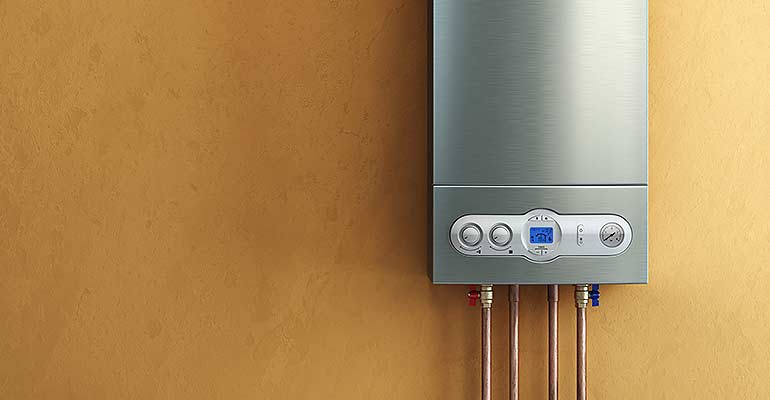We have stumbled on the article pertaining to How to Maintain Your Water Heater & Prolong its Life directly below on the internet and think it made sense to talk about it with you over here.

Hot water is important for day-to-day comfort, whether it's for a rejuvenating shower or cleaning meals. To guarantee your hot water system runs successfully and lasts longer, normal upkeep is key. This post provides functional tips and understandings on how to preserve your home's hot water system to stay clear of interruptions and costly fixings.
Introduction
Preserving your home's warm water system might appear challenging, yet with a few basic actions, you can ensure it operates smoothly for many years ahead. This guide covers whatever from comprehending your warm water system to DIY maintenance tips and understanding when to call professional assistance.
Value of Keeping Your Hot Water System
Normal upkeep not only extends the life expectancy of your warm water system yet also ensures it runs efficiently. Overlooking upkeep can bring about lowered efficiency, higher energy costs, and also premature failure of the system.
Signs Your Hot Water System Requirements Upkeep
Knowing when your hot water system needs attention can avoid major problems. Watch out for indicators such as inconsistent water temperature, odd sounds from the heating unit, or corroded water.
Recognizing Your Warm Water System
Prior to diving right into upkeep jobs, it's helpful to understand the basic components of your hot water system. Normally, this consists of the hot water heater itself, pipes, anode rods, and temperature controls.
Monthly Upkeep Tasks
Normal monthly checks can aid catch small problems prior to they intensify.
Flushing the Hot Water Heater
Purging your hot water heater eliminates sediment buildup, boosting performance and lengthening its life.
Monitoring and Replacing Anode Rods
Anode rods prevent deterioration inside the container. Inspecting and changing them when broken is vital.
Checking and Changing Temperature Setups
Adjusting the temperature level setups guarantees optimal efficiency and safety and security.
DIY Tips for Maintenance
You can carry out several upkeep tasks yourself to maintain your hot water system in top problem.
Looking for Leaks
Routinely inspect pipelines and connections for leakages, as these can result in water damages and higher costs.
Checking Pressure Alleviation Valves
Testing the stress relief valve guarantees it functions appropriately and avoids too much pressure build-up.
Protecting Pipelines
Protecting warm water pipes lowers heat loss and can conserve energy.
When to Call a Specialist
While DIY upkeep is valuable, some problems call for expert expertise.
Complicated Issues Needing Professional Help
Instances consist of major leakages, electrical issues, or if your hot water heater is continually underperforming.
Routine Specialist Maintenance Perks
Professional maintenance can consist of thorough evaluations, tune-ups, and making certain compliance with security criteria.
Conclusion
Routine upkeep of your home's warm water system is crucial for effectiveness, durability, and price savings. By complying with these pointers and knowing when to seek expert aid, you can ensure a reputable supply of warm water without unexpected interruptions.
How to Maintain an Instant Hot Water Heater
- Before tinkering with your hot water heater, make sure that it’s not powered on. You also have to turn off the main circuit breaker and shut off the main gas line to prevent accidents. Also turn off the water valves connected to your unit to prevent water from flowing into and out of the appliance.
- 2. When you’re done, you have to detach the purge valves’ caps. These look like the letter “T” and are situated on either side of the water valves. Doing so will release any pressure that has accumulated inside the valves while at the same time avoid hot water from shooting out and burning your skin.
- 3. When the purge valves’ caps are removed, you have to connect your hosing lines to the valves. Your unit should have come with three hoses but if it didn’t, you can purchase these things from any hardware or home repair shops. You can also get them from retail stores that sell water heating systems. Read the user’s manual and follow it to complete this task properly. When the hosing lines are connected, open the purge port’s valves.
- 4. You should never use harsh chemical cleaners or solutions when cleaning your unit. Make use of white vinegar instead. It should be undiluted and you’ll probably use about 2 gallons.
- 5. Now flush your water heater. This task should probably take about 40 minutes. We can’t give you specific directions for this because the procedure is carried out depending on the type, model and brand of your heater. With that being said, refer to the user’s manual.
- 6. When you’re done draining the unit, you have to turn off the purge port valves again. Remove the hosing lines that you earlier installed on each of the water valves. Put the valve caps (purge port) back in their respective places and be very careful so as not to damage the rubber discs that are found inside these caps.
- 7. Now that everything’s back in place, check your user’s manual again to find out how to reactivate your water heating system.
- 8. Once it is working, turn one of your hot water faucets on just to let air pass through the heater’s water supply pipes. Leave the tap on until water flows smoothly out of it.
https://www.orrplumbing.com/blog/2014/september/how-to-maintain-an-instant-hot-water-heater/

I recently found that blog posting on Water Heater Maintenance Tips You Can't Afford to Forget when perusing the web. Do you know anybody else who is sincerely interested in the niche? Feel free to share it. Thank-you for going through it.
This Resource
Comments on “Professional Tips for Caring for Your Home's Hot Water SystemTips on How to Keep Your Home's Hot Water System in Good ConditionHow to Extend the Life of Your Home's Hot Water System Through Maintenance”